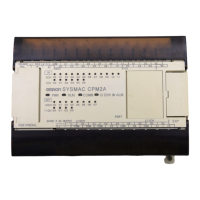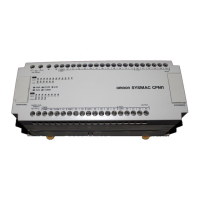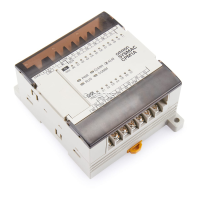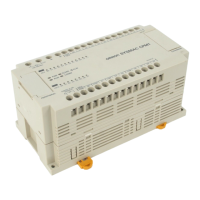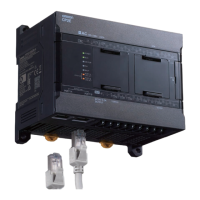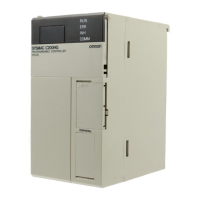92
Wiring and Connections Section 3-4
• When using several CPM2C’s together, it is recommended that circuits
are wired separately in order to prevent circuit-breaker malfunctions and
voltage drops due to inrush current.
• Twist power supply lines to prevent noise from the power supply lines.
Noise can further be prevented by wiring via a 1:1 isolation transformer.
• Use wires at least 1.25 mm
2
thick in order to allow for voltage drops and
to keep the current within the allowable level.
!WARNING Tighten the screws on the terminal block of the AC Power Supply Unit to a
torque of 0.74 to 0.9 N•m. Loose screws may result in burning or malfunction.
The 24-VDC service power supply terminals on the terminal block can be
used for input power supply.
Use the following to obtain the capacity of the service power supply that can
be used.
Example: CPU Unit + 5 Expansion I/O Units (1-W Power Consumption)
Power consumption = 4 (CPU Unit’s power consumption) + 1 (Expansion I/O
Unit’s power consumption)
× 5 (No. of Expansion I/O Units) = 9 (W)
Service power supply current = (14.4 (CPM2C-PA201’s rated capacity) – 9
(power consumption))
÷ 24 (V) = 208 (mA)
!WARNING If the 24-VDC output (either the service power supply or the power supply to
the CPU Unit) is overloaded, or is short-circuited, the voltage will drop, and
the output will turn OFF. Take external countermeasures to ensure the safety
of the system in such an event. Failure to do so may result in a serious acci-
dent.
!WARNING Do not connect a power supply to the service power supply terminals. If an AC
power supply is mistakenly connected to these terminals, the internal circuitry
will be damaged.
100 to 240 VAC
+
−
~
24 VDC
Can be used for input power supply.
+
−
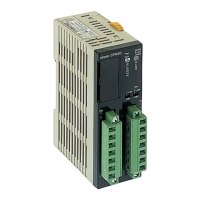
